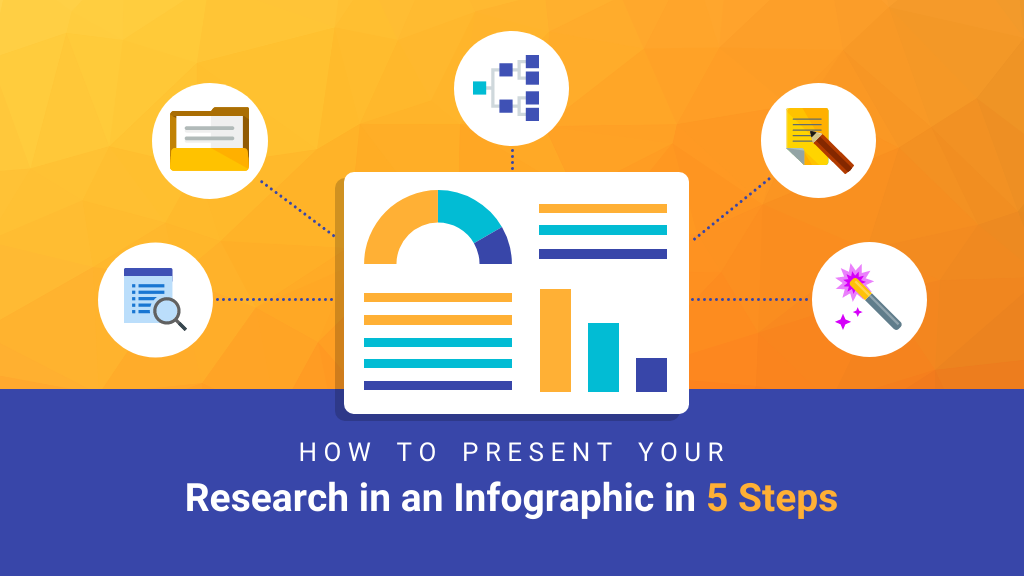
A research infographic visually presents data or insights from a study. It helps you share findings from research or surveys with a wider audience.
No matter how deep your research data is, a research infographic makes complex ideas easy to understand. Marketers, academics and business professionals use it for both internal and external communication. It’s one of many types of business infographics that stands out for its ability to simplify research.
Follow the process below to present your research findings with Venngage’s Infographic Maker. You can choose from a wide range of research infographic templates to get a headstart.
5 steps to make a research infographic
Creating a research infographic may seem challenging, but breaking it down into clear steps makes the process easier.
From organizing data to designing the layout, these five steps will help you turn complex data into a visually engaging infographic:
Step 1: Do the research
Researching your topic is crucial—it builds the foundation for a clear and effective infographic. This often means gathering information to unearth surprising facts or statistics.
There’s no one-size-fits-all approach. Researching a topic depends on factors unique to both the topic and the audience.
Many infographics rely heavily on quantitative research. Several others focus on qualitative research — descriptive or subjective information. And some may combine the two.
Let’s look at a few examples that drive home these differences. This infographic is qualitative in nature because it aggregates with subjective data:
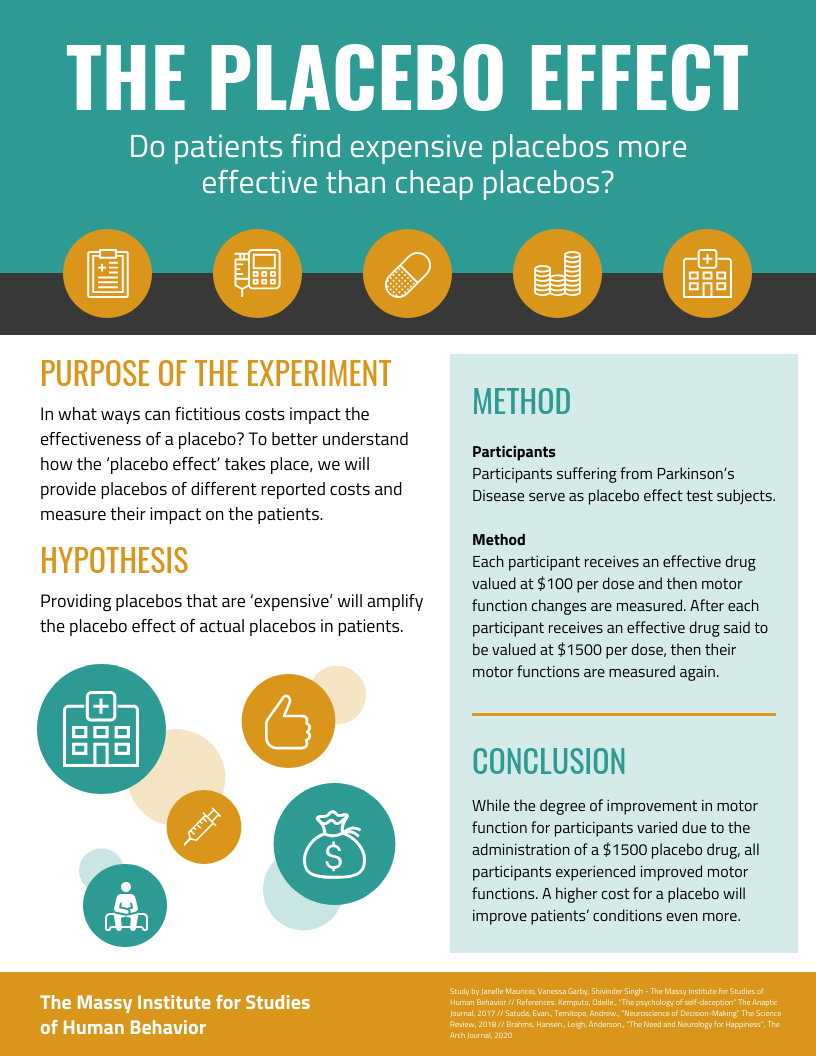
This market research infographic is quantitative — it uses data alone to report its findings. The only text included comes in the form of headings and labels:
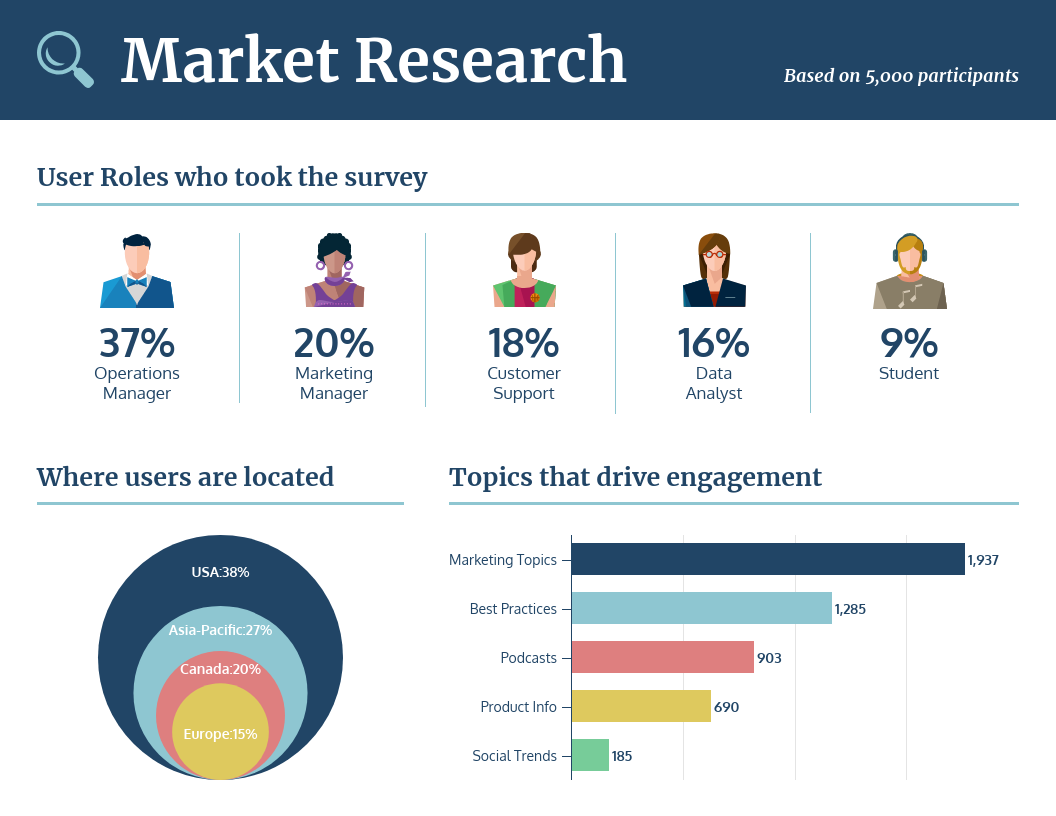
This next infographic blends knowledge-based insights and data, combining them into one cohesive story:
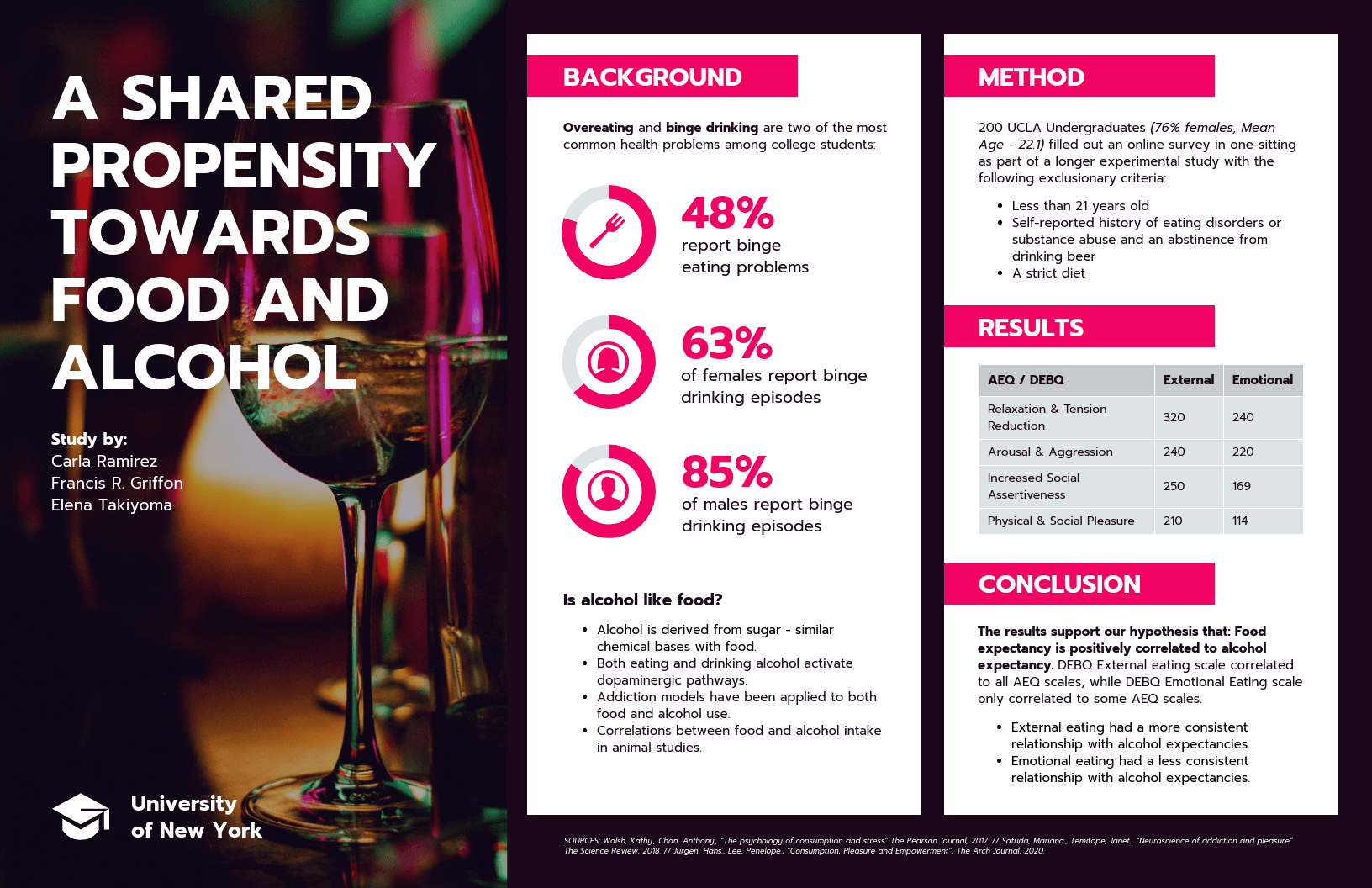
How do you know which types of research to use?
The choice between quantitative and qualitative information often depends on your audience. If the people reading the content will already have some basis for understanding the topic, then you don’t need much qualitative content.
On the other hand, if you need to explain concepts to your readers, general facts can be helpful.
This infographic targets Game of Thrones fans. It makes certain assumptions about the show’s plots that people can relate to:
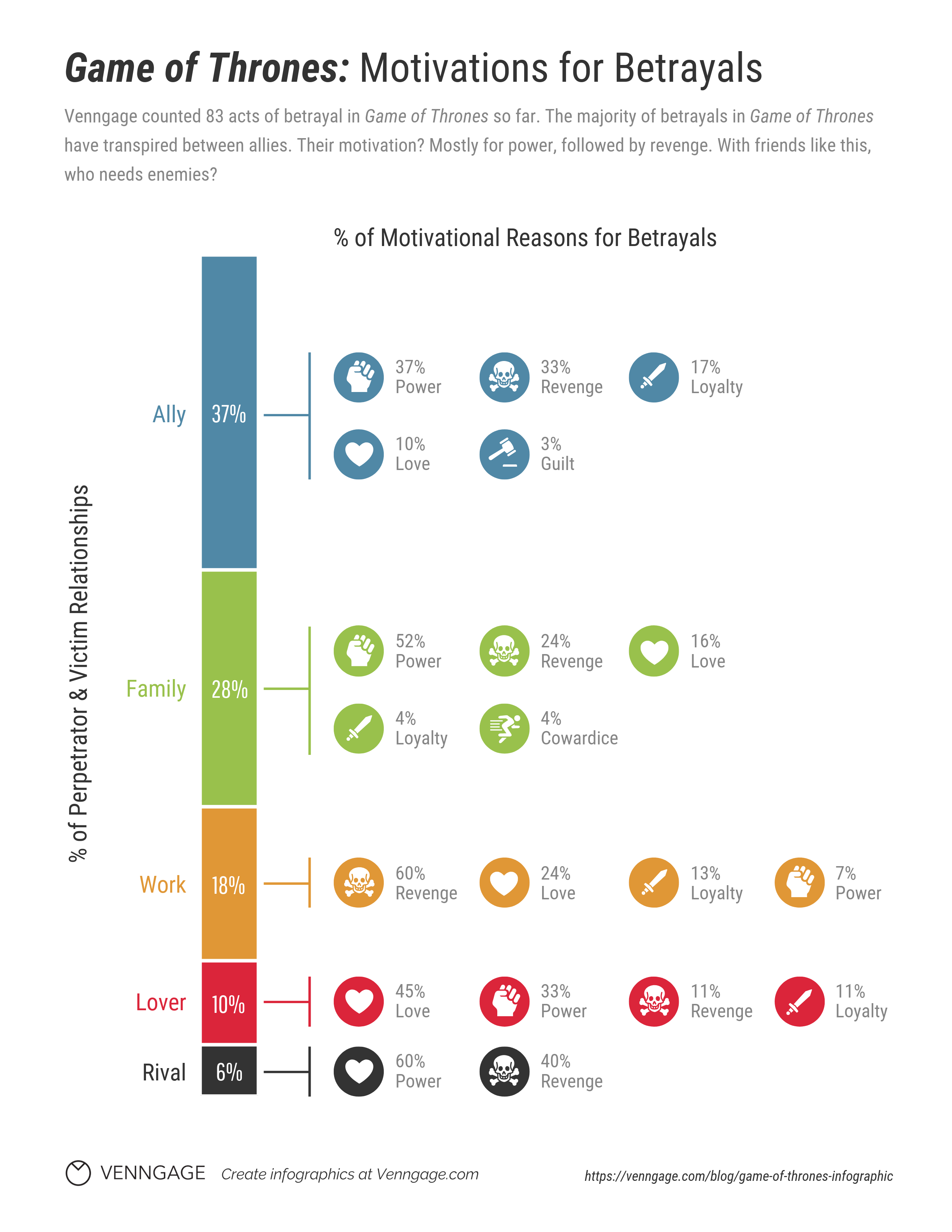
This infographic explains neurological health conditions, assuming readers have no prior knowledge:
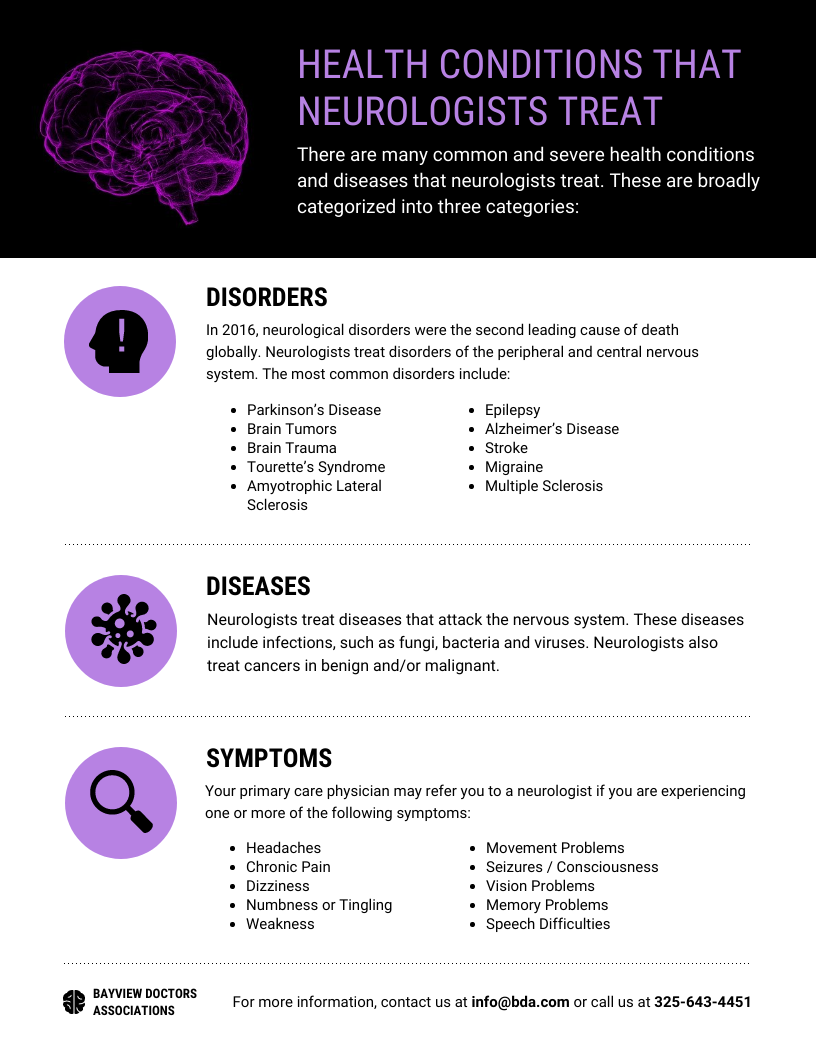
Another approach to present this data could have been to present detailed statistics on these conditions. But that works only if the readers already understand basic brain health concepts.
Related: 7 Healthcare Infographic Templates to Use in Healthcare Settings
Step 2: Organize the information
The next step is to organize the information into an outline so you can identify gaps in your research.
You can outline the infographic in tools like Microsoft Word or Google Docs or simply jot it down on paper. In your outline, note what data you want to include and where and how you will place it.
It’s best to segment your outline into a beginning, middle and end:
- In the beginning, which could be as brief as the title, define the infographic topic. This can be the title, a subtitle and a short introduction.
- The middle is the meat of your infographic. However, it doesn’t always have to be in the middle of your page — depending on the template. Either way, the middle consists of all the facts, figures and content to tell a story.
- Most infographics end with a strong call to action (CTA). But you can also include citations or contact information, like this one does:
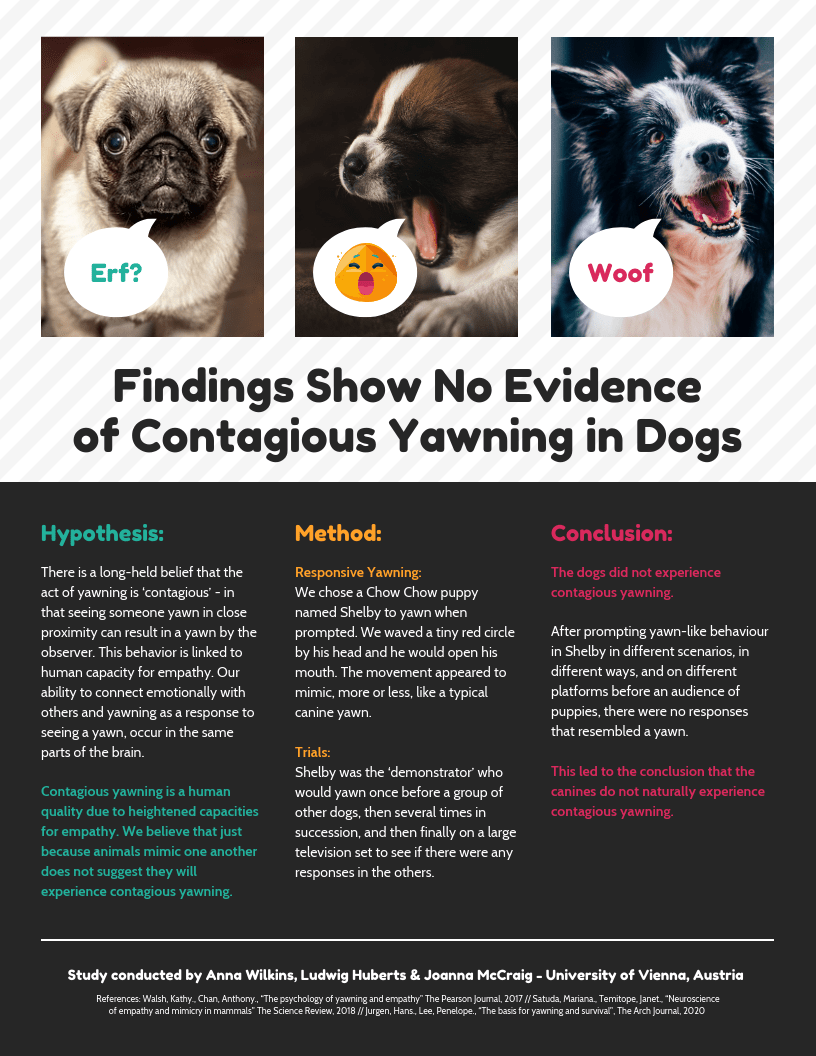
Step 3: Map out the structure
Next, structure your research data to create a polished, professional-looking design. It’s a matter of extending the scope of the outline into a proper visual structure.
Create a compelling title, then map out all the text elements. This might include section headings, labels or chart titles. Decide if you want to use data visualization and what kind you want to use.
Here’s an example of a scientific research infographic with a neat design structure:
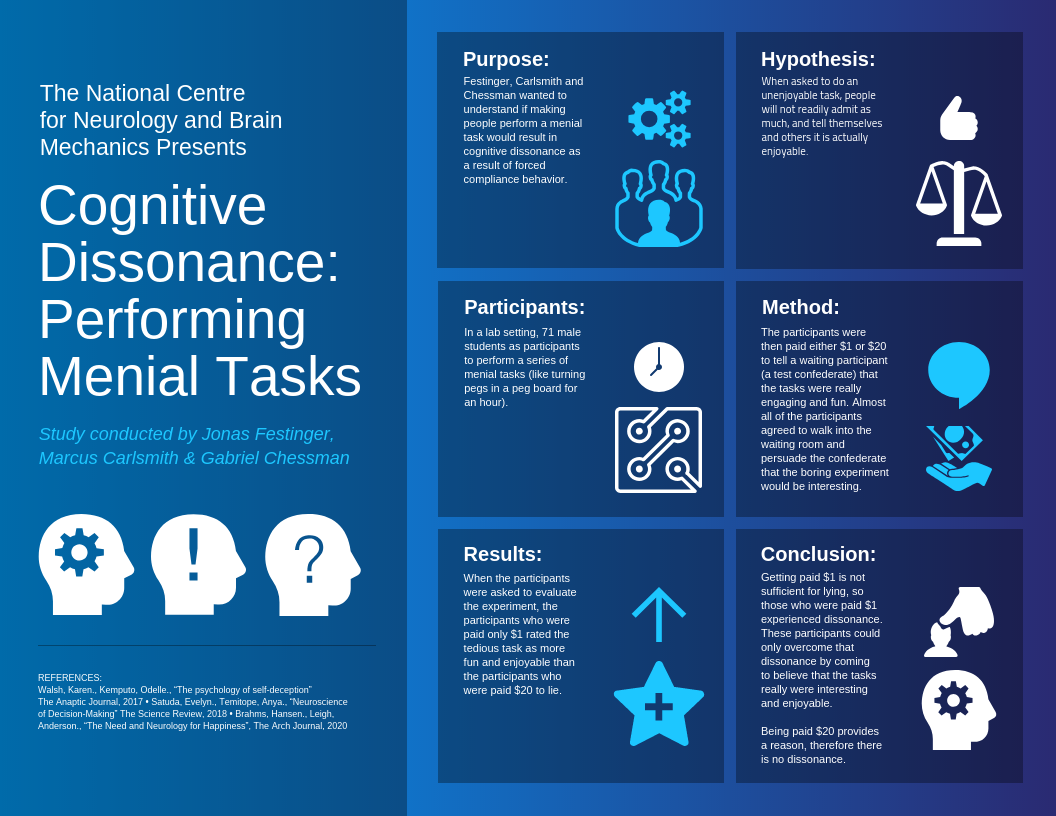
The benefit of using a template like this is that it handles much of the work for you, saving time and effort.
Once you’ve put everything together, take a step back — literally. Microbreaks help keep your mind sharp. Then, assess whether your story is clear and engaging.
Revision is key to strong creative work. Once you think you’re finished, go back and refine. Tighten the copy, simplify concepts and remove redundancies as much as possible.
Step 4: Design the infographic
For the average person, designing can be an intimidating step. But if you’re using one of Venngage’s pre-built templates, this can be a cakewalk. Simply import your research data from Microsoft Excel or Google Sheets into Venngage’s Infographic Maker and the tool will do the rest for you.
This short tutorial video explains in clear steps how you can create an infographic with Venngage:
You can also choose the best format for your message by exploring different types of infographics.
Take a good break before you sit down to revise your work.
Step 5: Refine and perfect your work
Once you’re happy with the design, refine the colors, fonts and visuals to ensure the style resonates with your audience.
This infographic uses black, grey and white colors to blend informational content with data. Because the color palette is simple, a very clear, almost retro feel is obvious:
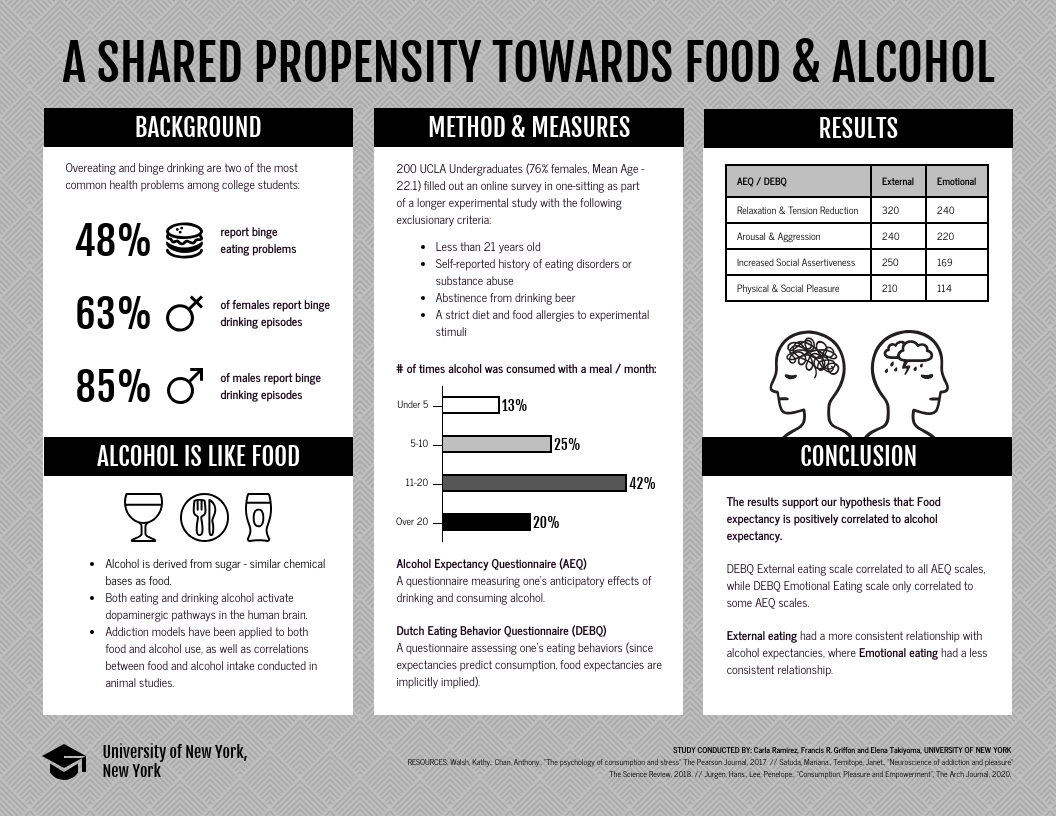
With a few tweaks, you can re-design the template to suit your needs. You can use brighter colors, relevant icons or modern font choices. Both are effective, but the right choice will come down to which best serves the audience.
Related: 6 Ways to Use Infographic Icons Like a Pro
Research infographic examples (With free templates)
Next, let’s explore examples to inspire your own design.
This infographic guides readers through a clear, structured flow:
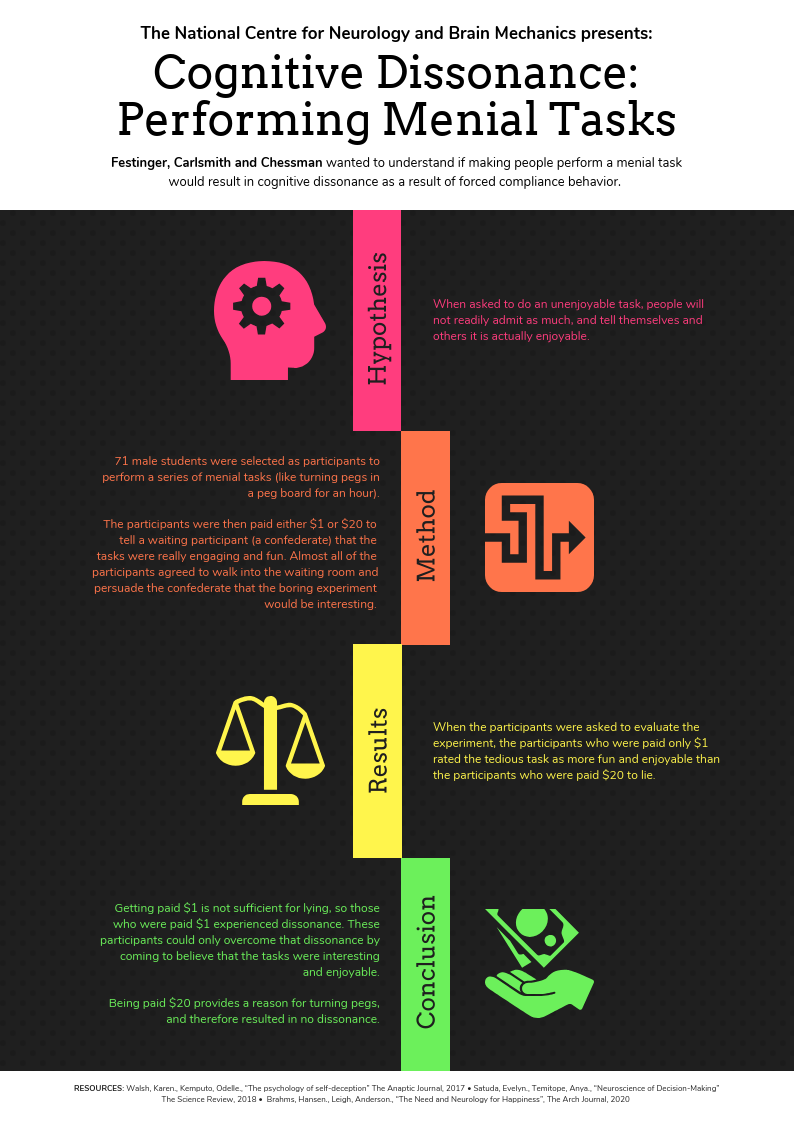
The boxes in the center act as an arrow that pulls the eye down the page, and color-coded content keeps everything separated.
This research process infographic example is ideal for explaining the steps in a scientific project. You can switch the colors and icons to make it suitable for any other domain:
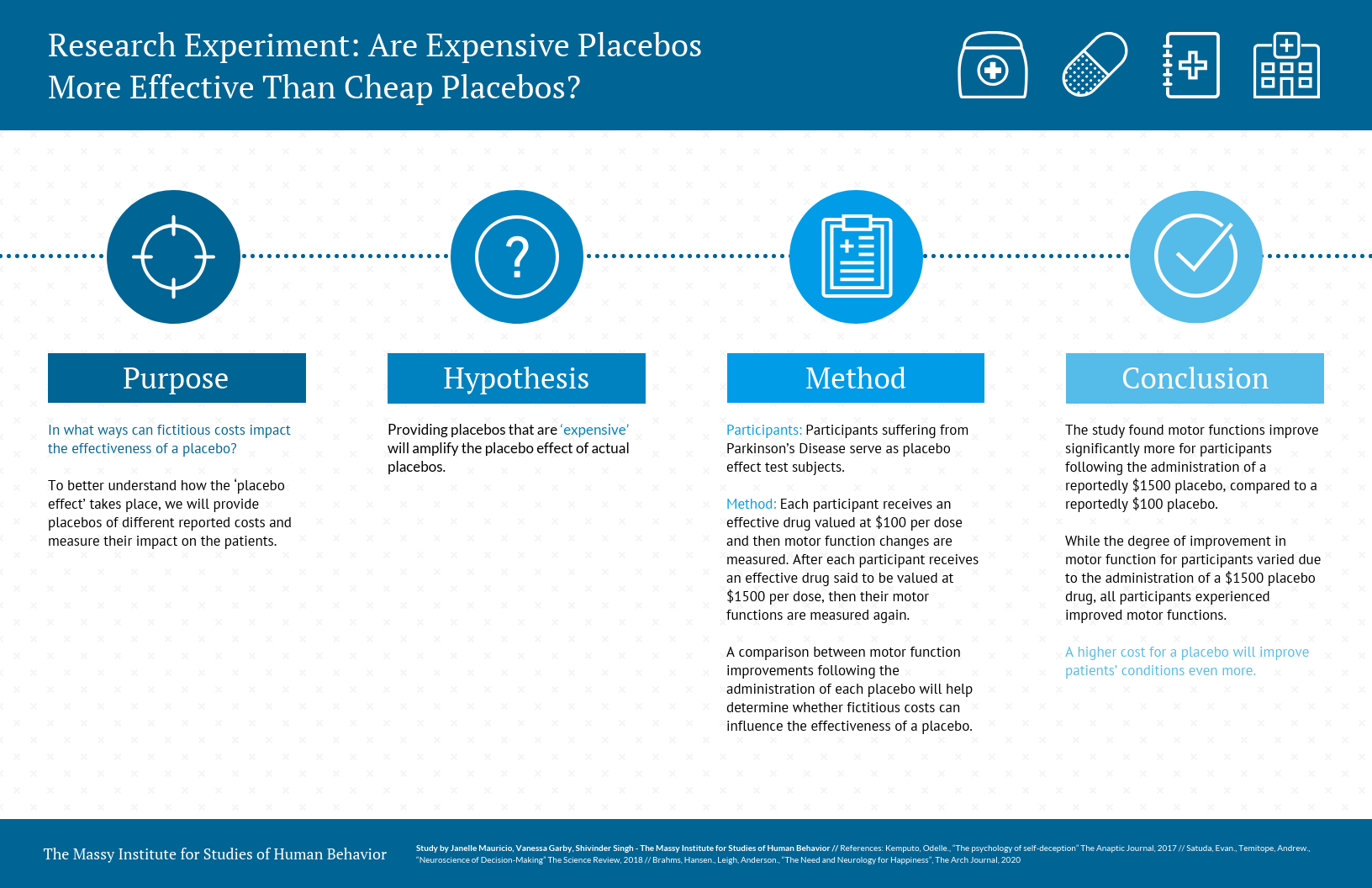
Getting approval for campaigns and budgets often requires outlining the research process upfront. This proposal infographic visualizes the timeline of a clinical study:
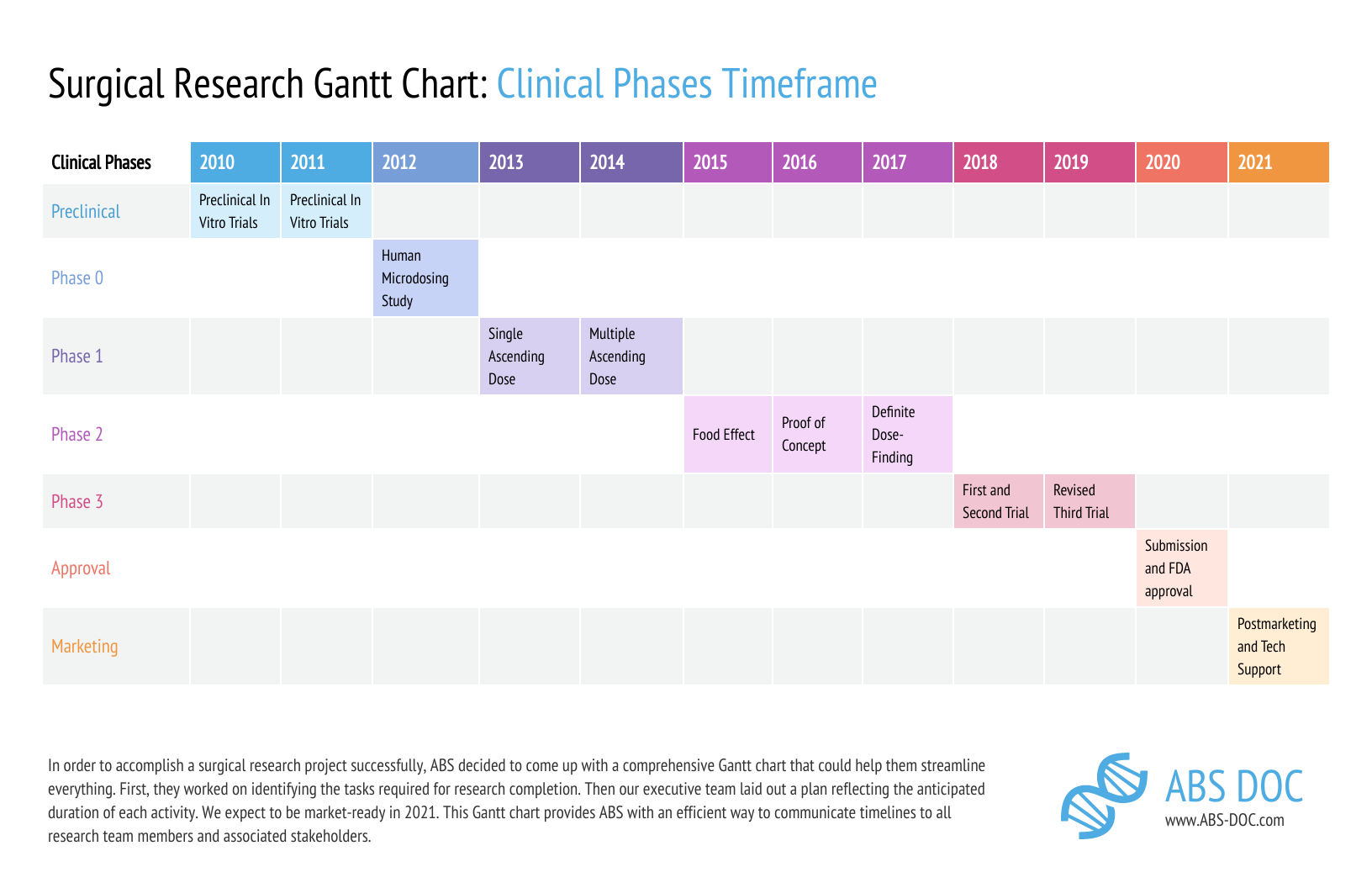
This market research infographic highlights key insights about survey participants. It’s perfect for quick-hit research summaries:
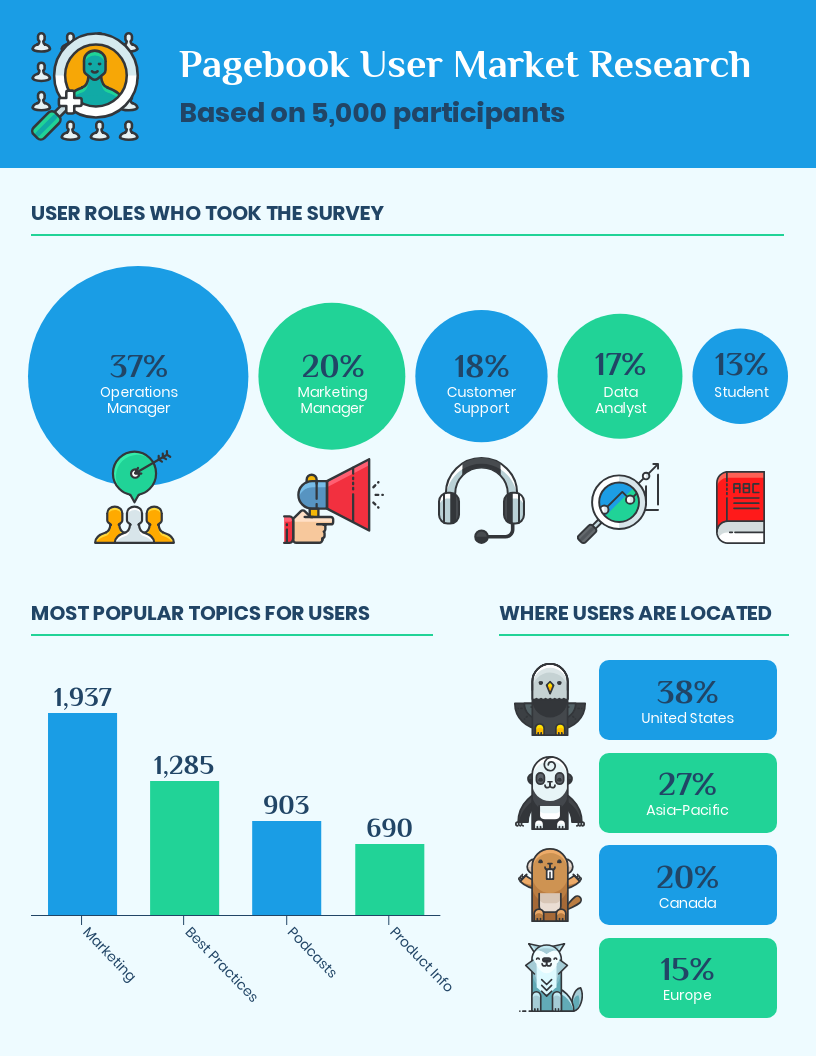
What are the essential elements to include in a research infographic?
Summarizing a study, presenting survey results or explaining research? These key elements can ensure clarity and impact:
Title and subtitle
Make your infographic title clear, concise and compelling to read. It should immediately communicate the infographic’s focus. Follow it with a strong subtitle to provide more context. Also, offer a brief explanation of the research topic or the key question being answered.
Here’s an example from an infographic that uses an interesting title and subtitle to grab the reader’s attention right away:

Introduction
Set the stage by explaining why this research matters. Provide a brief overview of the study’s purpose, the problem it addresses or the methodology used. This section gives your audience context before they explore the findings.
The Game of Thrones infographics we saw above is a perfect example. It has an introduction section right after the title that explains the rationale behind the research.
Key findings and data
Highlight the most critical takeaways from the research. Use short, impactful statements supported by statistics, survey results, or key insights. Prioritize clarity — avoid information overload by focusing on the most relevant points.
Visual elements
Charts, graphs, icons and illustrations make your data more engaging and easier to understand. Choose the right visuals to represent different types of information — bar charts for comparisons, pie charts for proportions, or timelines for trends. A well-placed visual can make complex insights instantly clear.
Comparisons and trends
Put your data into context by showcasing trends over time, differences between groups, or changes in behavior. You can use side-by-side comparisons to help readers grasp patterns at a glance. This can also make your findings look meaningful and actionable.
For example, let’s say you want to create an infographic to showcase survey results. You can use binary numbers, rating scales, word clouds or Venn diagrams to compare the findings.
Conclusion
Wrap up your infographic with a clear summary of key takeaways. Reinforce the research’s importance, suggest next steps or direct readers to related resources.
Sources and references
Credibility is crucial. Always cite your data, whether from research studies, academic papers or industry reports. A well-cited infographic builds trust and ensures your audience knows where your insights come from.
Learn more about how to cite an infographic in APA, MLA or Chicago citation styles.
Research infographic FAQ
1. How do I do research for an infographic?
To do research for an infographic, identify sources that will have the information you need by doing web searches of the topic. If you’re looking for data for your infographic, use “topic + statistics” or a similar query in the search engine. Make sure you note down the sources, including the URLs, to cite them later.
2. What type of research is presented best in an infographic?
Infographics are best for presenting quantitative research data, like statistics, percentages and comparisons. Charts, graphs, and maps make these data points easy to visualize and understand.
3. What are the ways to present the data gathered in your study?
To present data gathered in a study, you can use various methods including tables, graphs, maps, narratives, textual descriptions, infographics, box plots, histograms or even multimedia presentations.
You can also use textual summaries like descriptive statistics or qualitative analysis to add more context. Or, you can leverage visual aids like images or diagrams to improve clarity and simplify complex concepts.
Learn how you can pick the right charts or graphs for your data:
4. How do I make an infographic from a research paper?
To create an infographic from a research paper, start with an outline that follows its structure. Fill it with key content, data or insights. Finally, arrange everything into a clear, logical layout.
5. What is the difference between a research poster and an infographic?
A research poster is a large-format, static visual used at conferences to present research findings and methods. It usually contains detailed textual information, graphs and charts.
In contrast, a research infographic presents data more concisely and in a visually engaging way. It also uses images, text and graphics for quick understanding and easy sharing.
Turn your research into meaningful infographics
When it comes to translating research into infographic form, it’s crucial to remember that your primary goal is serving the audience. For instance, you might find a data point personally fascinating. But if it doesn’t support your main message, it doesn’t belong in your infographic.
Research infographics are engaging and informative — even without flashy data visualizations. Start creating yours for free with Venngage’s easy-to-edit templates and drag-and-drop editor.




































